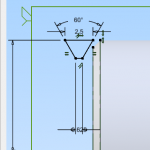Advertisement
Not a member of Pastebin yet?
Sign Up,
it unlocks many cool features!
- # From "Programming for Computations, (Svein Linge, Hans Petter Langtangen 2018)."
- """
- Module for computing vertical motion
- characteristics for a projectile.
- """
- def y(v0, t):
- """
- Compute vertical position at time t, given the initial vertical
- velocity v0. Assume negligible air resistance.
- """
- g = 9.81
- return v0*t - 0.5*g*t**2
- def time_of_flight(v0):
- """
- Compute time in the air, given the initial vertical
- velocity v0. Assume negligible air resistance.
- """
- g = 9.81
- return 2*v0/g
- def max_height(v0):
- """
- Compute maximum height reached, given the initial vertical
- velocity v0. Assume negligible air resistance.
- """
- g = 9.81
- return v0**2/(2*g)
- def application():
- import numpy as np
- import matplotlib.pyplot as plt
- import sys
- print("""This program computes vertical motion characteristics for a
- projectile. Given the intial vertical velocity, it computes height
- (as it develops with time), maximum height reached, as well as time
- of flight.""")
- try:
- v_initial = float(input('Give the initial velocity: '))
- except:
- print('You must give a valid number!')
- sys.exit(1)
- H = max_height(v_initial)
- T = time_of_flight(v_initial)
- print('Maximum height: {:g} m, \nTime of flight: {:g} s'.format(H, T))
- # compute and plot position as function of time
- dt = 0.001 # just pick a "small" time step
- N = int(T/dt) # number of time steps
- t = np.linspace(0, N*dt, N+1)
- position = y(v_initial, t) # compute all positions (over T)
- plt.plot(t, position, 'b--')
- plt.xlabel('Time (s)')
- plt.ylabel('Vertical position (m)')
- plt.show()
- return
- if __name__ == '__main__':
- application()
Advertisement
Add Comment
Please, Sign In to add comment
Advertisement

